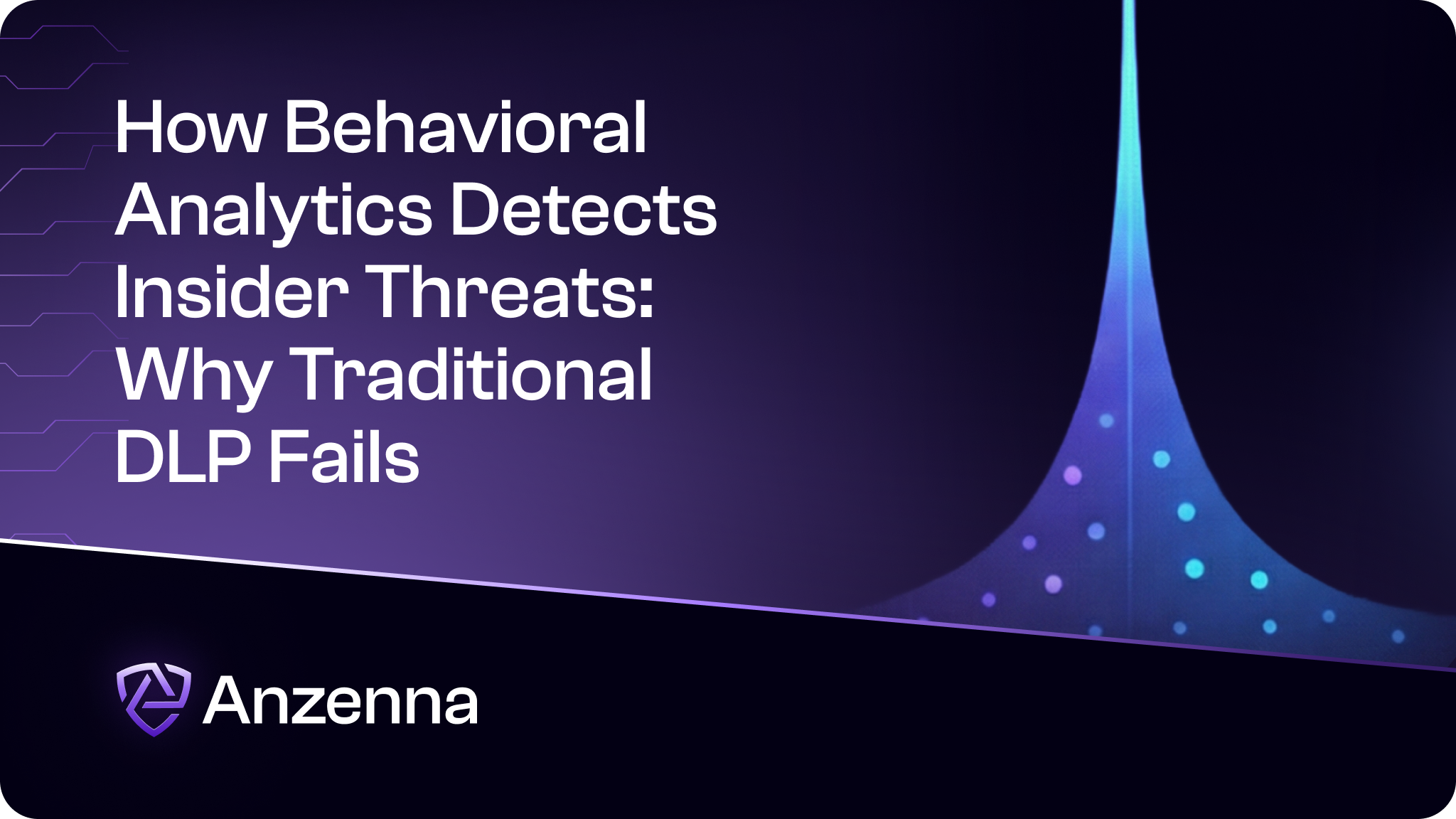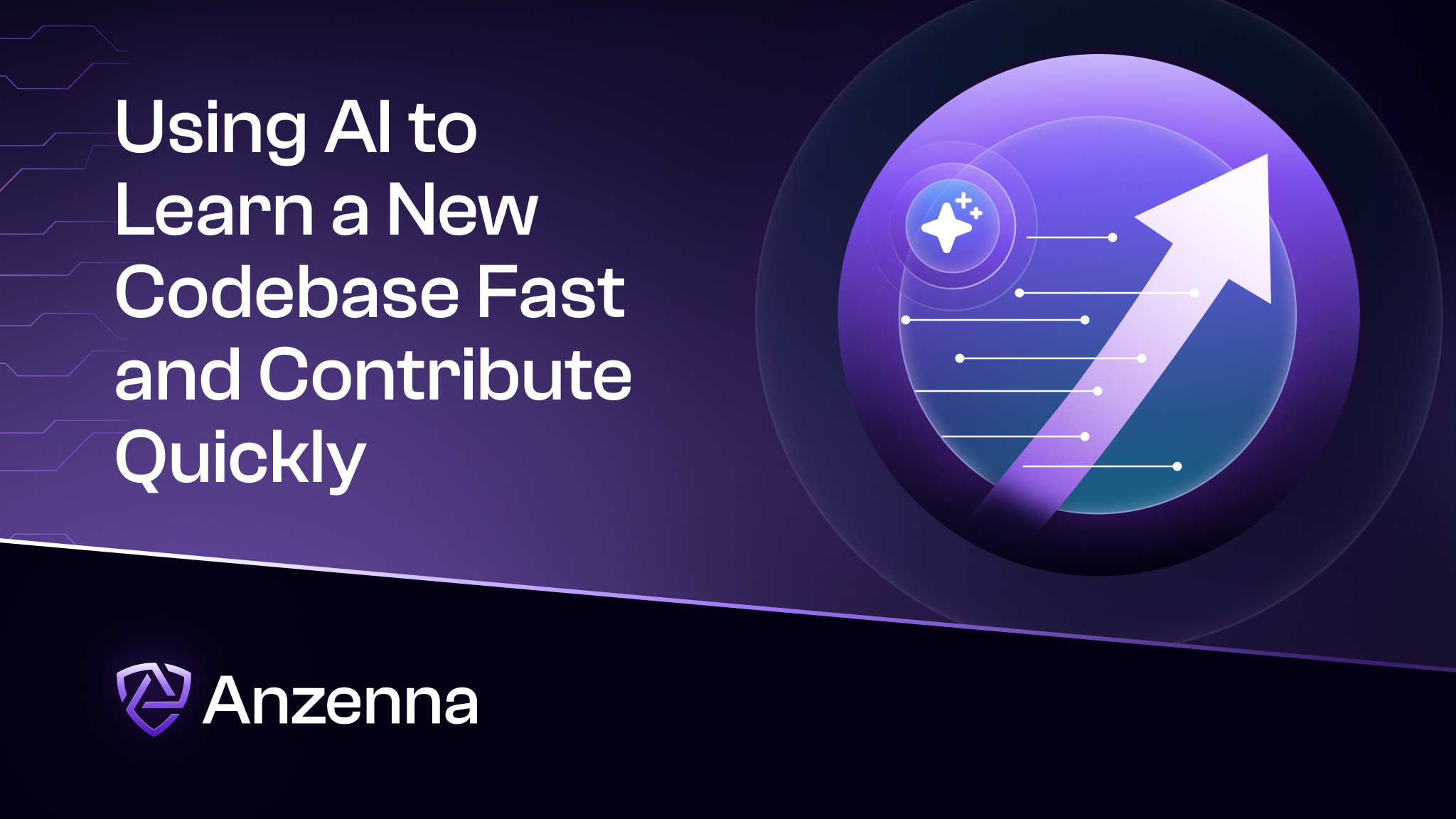A common thread in breaches at companies like Coinbase, MGM, Tesla, Uber, and Disney? Insiders!
The Rising Cost and Impact of Insider Threats
Insider security breaches have become a costly and frequent reality for enterprises. Recent studies show that insider-led incidents are increasing in both frequency and financial impact – $400 million for the most recent Coinbase breach. Between 2020 and 2022, the percentage of companies experiencing more than 20 insider incidents per year jumped to 67% (from 53% in 2018). The annual average cost of these incidents has surged accordingly – from an estimated $8.3 million in 2018 to $16.2 million in 2023. By 2025, this figure climbed even higher, reaching $17.4 million per year on average. These numbers underscore that insider threats are not slowing down but actually increasing and broadening in scope with AI and are straining security budgets and resources worldwide. For context, one global report found the total annual average cost of an insider threat incident sits at $15.4 million, with negligent insiders accounting for the largest share of that expense.
However, not all insider threats are malicious spies or disgruntled employees. In fact, the majority are due to simple mistakes and carelessness. Over half (56%) of insider incidents stem from employee or contractor negligence, far outpacing those caused by malicious insiders (26%) or stolen credentials (18%). In other words, well-meaning staff who inadvertently violate security policy or mishandle data are often the weakest link. Everyday errors like misaddressed emails, improper document sharing, or failing to secure sensitive files can lead to serious data leaks. From the 2024/25 example of a Disney employee inadvertently installing a fake AI app that stole 1.1 TB of data to the 2022 Pegasus Airline exposure of 23 million files, ~6.5TB of data when a system administrator accidentally misconfigured a cloud storage bucket, leaving flight charts, crew PII, and even source code publicly accessible, it all points to insiders. Thankfully discovered by researchers before attackers could exploit it, the Pegasus Airline incident still violated data protection laws and highlighted how a single configuration mistake can put thousands at risk. The global scope of such cases – from a Turkish airline’s cloud leak to an employee in London emailing the wrong client list – shows that no region or industry is immune to insider mishaps.
The business impact of these threats goes beyond IT damage; it hits the organization’s reputation and bottom line. Simple mistakes like sending sensitive information to the wrong recipient are alarmingly common – 17% of employees admit to doing so. Such errors have tangible consequences: roughly 29% of companies report losing customers due to an employee’s email mistake or data leak. Over 60% of security issues involve a human element in some way, whether it’s a careless mistake or deliberate wrongdoing, and nearly half of all breaches originate from inside the organization.
These statistics drive home a clear message for CISOs and security leaders: insider risk is a pervasive, expensive problem, and it’s often the inadvertent missteps – not just the headline-grabbing malicious betrayals – that cause the most headaches.
Why Traditional Tools Fall Short for Insider Risk
Traditional security tools have long been the go-to for protecting data, but they were never built with insider behavior in mind. Data Loss Prevention (DLP) systems, Security Information and Event Management (SIEM) platforms, and Cloud Access Security Brokers (CASBs) each play important roles in a cybersecurity program – yet when it comes to insider threats, they leave critical gaps unaddressed. These legacy solutions excel at enforcing policies or aggregating technical events, but they lack the human context and continuous behavioral analysis needed to catch subtle signs of insider risk. Below, we examine why these tools often prove insufficient against today’s insider threat challenges:
- DLP – Protects Data, But Misses Intent: DLP solutions monitor and block sensitive data exfiltration based on content triggers (keywords, patterns, file types). They are like locks on the doors – effective at stopping clearly unauthorized transfers – but blind to intent and authorized misuse. If an employee with legitimate access decides to steal or mishandle data, traditional DLP might not raise any alarm because no policy was technically violated. DLP focuses on what data is moving, not why. It can’t tell if a normally trustworthy support employee is downloading an unusually large number of confidential files or slowly siphoning information over time. In short, DLP “focuses on data, not the behavior or intentions behind a user’s actions”, and thus an insider with valid credentials can abuse access without DLP recognizing the threat. The tool might flag a file being emailed out, but it won’t discern whether that was a careless mistake or a malicious exfiltration – and that context makes all the difference. In addition, DLP does not cover all elements of insider risk. E.g. Disney was hacked because an employee inadvertently downloaded a fake AI app which stole vast amounts of data. A DLP will not catch this type of insider threat.
- SIEM – Lots of Logs, Little Insight: SIEM platforms aggregate logs from across the network (VPN, servers, firewalls, etc.) to detect suspicious events, often using correlation rules. They are invaluable for spotting known attack patterns and compliance reporting. However, SIEMs are fundamentally event-driven and reactive – they alert after something bad has already happened. A SIEM will dutifully log an unusual login or a large database query, but it typically lacks user-behavior baselining to connect the dots across multiple subtle actions. Security teams end up wading through a “massive haystack” of alerts and log data, trying to find the needle that signals an insider incident. By the time a pattern is clear (for example, that Bob from finance has been accessing files he never touched before and emailing them out), the damage may be done. SIEMs also suffer from alert fatigue – they generate so many alerts that real insider warning signs get buried in noise. They catch discrete anomalies (a single forbidden access), but cannot easily track slow-burn behavioral deviations that unfold over weeks or months. In sum, SIEM provides a fragmented, after-the-fact view of insider activity, when what’s needed is continuous monitoring that could predict and prevent risky behavior. SIEMs also require the customer to aggregate all the required data, pay by data volume and build custom queries looking for all the badness. This significantly increases the cost and resourcing needs. Despite that, SIEMs do not catch advanced exfiltration such as an employee moving company source code to their personal accounts/devices without false positives.
- CASB – Cloud Control with Blind Spots: CASBs are either agent based or require traffic to be proxied through them and are aimed at tackling the explosion of SaaS usage and shadow IT, acting as a gateway to monitor and enforce cloud application policies. They shine at identifying unsanctioned app use and enforcing data policies in the cloud (e.g. blocking an upload of a customer list to personal Google Drive). This is useful for compliance – ensuring, for instance, that data in cloud apps is not shared publicly or that sensitive info is encrypted. However, CASBs are inherently focused on cloud traffic; they may miss risky activities happening elsewhere, such as on endpoints or via off-network channels. If an employee bypasses corporate cloud platforms entirely – say by using a personal email or an unauthorized device – a CASB might not see it. Additionally, while CASBs can flag anomalies within cloud usage (like an abnormal number of file downloads), they don’t correlate that with the user’s broader behavior outside the cloud. In today’s decentralized environments, data moves fluidly between cloud apps, local devices, and external collaborators. A tool limited to cloud boundaries can still leave visibility gaps where insiders might slip through.
Insider Risk is not just a traffic or data problem but also a behavior problem which is left unaddressed.
Ultimately, these traditional tools each operate in silos (one watching data egress, another watching network events, another EDR alerts, another cloud apps ..) and they “focus on event logs, and data protection without understanding the user behavioral context or joint insights across these silo’ed tools”. They were not designed to piece together the nuanced mosaic of human behavior across an organization. As one CISO we interviewed aptly put it, adding more point tools doesn’t automatically improve security because “these tools can only report on what they can see – they don’t know what they’re missing”. This limitation results in an “illusion of visibility”: security teams feel they have many bases covered, yet the subtle precursors of an insider incident (like a disgruntled employee’s changing file access habits) go unnoticed. For instance if an employee has access to sensitive data and has had their machine infected with malware “n” times in a given period of time is missed. If security teams know that information, they can automatically de-provision access as it is likely that the attacker is trying to compromise the employee to get access to sensitive data. Modern insider risk management requires moving beyond this patchwork of point solutions and looking at user behavior holistically, finding those toxic combinations that can really cause serious breaches.
The Behavioral Red Flags Conventional Security Misses
What exactly are those subtle insider signals that tend to slip through the cracks of legacy security tools? In practice, dangerous insider activity often manifests as small deviations in normal behavior rather than blatant rule violations. Conventional tools that lack user behavior analytics will miss many of these warning signs. Here are some common behavioral indicators and context clues that can precede insider incidents but are typically overlooked by traditional monitoring:

- Unusual Access Patterns: Employees usually develop predictable routines in the data they access and the systems they use. A classic red flag is when a user suddenly accesses data outside their typical purview or at odd hours. For instance, an engineer who normally works on Product A begins downloading large volumes of data from Project X (which they never touched before), or an employee signs in remotely at 3 AM and proceeds to query confidential databases. A SIEM might not flag off-hour logins if they use valid credentials, and a DLP system won’t object if the data isn’t explicitly classified as sensitive. But such behavioral deviation – accessing new, sensitive resources beyond one’s role, especially on a strange schedule – could indicate insider reconnaissance or data theft in progress. Modern insider risk tools look for these anomalies against a user’s baseline, whereas traditional tools treat each access in isolation.

- Data Hoarding or Drip Exfiltration: Rather than a single large data dump (which DLP might catch), insiders with ill intent often exfiltrate data in smaller pieces or simply collect far more information than usual over time. For example, an employee might start downloading unusually large quantities of files from SharePoint over several weeks, or incrementally forwarding emails with attachments to their personal account. Each individual action might appear authorized (and thus not trigger DLP), but the trend is highly irregular for that person. Conventional security solutions aren’t aggregating activity over time to notice that user X transferred 5× their normal data volume this month. Behavioral monitoring would flag a “volume anomaly” or sudden spike in data access that warrants a closer look, distinguishing a potential insider threat from routine work.
- Circumvention of Controls: Negligent insiders sometimes bypass security controls in small ways that accumulate risk. For example, an employee might repeatedly use unapproved apps or personal USB drives because it’s convenient, even if policies forbid it. A CASB might catch some unauthorized cloud apps, but users often find ways around corporate monitoring (using unsanctioned devices, encrypted messaging apps, etc.). Similarly, someone might try to disable or pause endpoint monitoring agents or cover their tracks in log files. One single instance might be chalked up to a glitch, but patterns of policy bending – like frequent attempts to send files via forbidden channels or consistent use of workarounds – are signals of an insider who is either unaware of policy or intentionally ignoring it. Traditional tools in isolation might block each attempt without connecting the dots that a particular user is persistently trying to go around security, which is itself risky behavior.
- Emotional or HR Indicators Coupled with IT Activity: Often, the precursors to an insider incident are not purely digital. Human factors such as job dissatisfaction, policy grievances, or sudden changes in demeanor can foreshadow malicious intent. For instance, a salesperson who just got word of a layoff might begin downloading the customer database. Security tools focused only on IT events won’t catch the context of why that person’s behavior changed. While it’s a delicate area, modern insider risk programs sometimes incorporate inputs from HR (departing employee lists, performance issues) and even communication monitoring (public Slack or email sentiment) to gauge insider risk. Conventional DLP or SIEM have no window into these softer signals. The challenge for CISOs is correlating behavioral signals across domains – digital activity + human context – to detect when a normally good employee might turn risky. An insider risk platform that integrates HR data, file activity, and access logs can alert on a high-risk combination (e.g. a soon-to-depart engineer accessing large amounts of source code). Traditional tools operating in silos would miss the significance of that combination.
Beyond Compliance: Decentralized Identity, SaaS Sprawl, and BYOD Challenges
Another reason insider risks are harder to manage today is that the IT environment itself has transformed. Many security programs remain heavily compliance-driven – ensuring checkboxes are ticked for regulations and standard controls – but compliance doesn’t equal security, especially in today’s decentralized, cloud-first workplaces. Organizations now grapple with decentralized identities, an explosion of SaaS applications, and bring-your-own-device practices, all of which stretch the limits of traditional security controls and policies:

- Decentralized Identity: Gone are the days of a single corporate Active Directory controlling all user access. Today, employees, contractors, and partners may each have multiple identities across various cloud services (Office 365, Google Workspace, DevOps platforms, etc.). Federated identity and single sign-on help, but gaps remain – users sometimes share data via personal accounts or external collaboration links that bypass corporate SSO. This decentralization means security teams lack a unified view of who is accessing what. A user could use an approved identity for some systems and a personal Gmail for others, making it tough for compliance checks to enforce policies consistently. An insider risk arises when, say, a developer syncs code to a personal GitHub account – their intentions might be innocent (e.g. working from home), but the identity used is outside the monitored zone, so traditional controls might not log or prevent that action. Compliance rules assume identities and access are centrally managed; the reality is far messier, requiring solutions that can link activity to the human behind various accounts. Modern insider risk tools often tap into identity and access logs across cloud and on-prem systems to piece together a user’s actions, whereas a legacy compliance control might only audit the “official” accounts and miss side doors.

- SaaS Sprawl and Shadow IT: The average enterprise now uses dozens, if not hundreds, of different SaaS applications. Business units can sign up for new cloud services with a credit card, often without IT’s knowledge. This SaaS sprawl creates compliance nightmares – data can reside in many third-party clouds, and users often grant OAuth permissions or share data across apps in ways that evade corporate oversight. If your compliance program says “we use XYZ approved cloud storage with DLP,” what about the engineer who decided to back up files on Dropbox, or the marketing team using a new analytics SaaS that hasn’t been vetted? According to one survey, 71% of security leaders are concerned about sensitive data being stored outside of corporate systems where their security team has no visibility. This lack of visibility means an employee could be leaking data via an unmonitored SaaS channel and the company’s traditional tools (and audits) wouldn’t even know. Insider risk management solutions address this by integrating with APIs and logs from a wide array of SaaS apps to detect unusual data sharing or downloads, even in cloud services that might not be fully under IT control. Pure compliance-driven controls, on the other hand, often focus on known systems – leaving a large blind spot in the form of shadow IT and third-party cloud services.

- BYOD and Remote Work: The rise of bring-your-own-device and remote work arrangements further complicates insider risk management. When users work from personal laptops or mobile devices, many of the company’s standard endpoint controls can be rendered moot. An organization might have a policy that “all devices must have DLP agent X installed”, but enforcing that on an employee-owned phone or home PC is challenging (and sometimes not possible due to privacy regulations). Compliance frameworks might mandate data encryption and device management, but with BYOD, IT loses a degree of control over the hardware. This can lead to scenarios like an employee saving a sensitive report on their unencrypted personal tablet, or using a personal email app that isn’t monitored. Traditional network-based monitoring also fails with remote work: an employee working from a coffee shop on a personal device won’t be behind the corporate firewall, so their actions might fly under the radar. In this decentralized work model, insider risks can manifest as data being downloaded to uncontrolled endpoints or uploaded from unmonitored networks. An insider risk solution must adapt by using cloud-delivered monitoring or agentless approaches to cover activity off the corporate network (for example, analyzing cloud audit logs to see if a user downloaded data to an unknown device). Compliance controls alone struggle here – you can have a policy requiring secure use of data, but without technical visibility on BYOD endpoints, you’re relying on trust. Modern solutions like agentless IRM platforms aim to fill this gap by observing risky behavior through the cloud and identity layer rather than solely on devices.
Communicating Behavioral Risk to Non-Technical Stakeholders
Even when an organization has advanced tools to detect insider anomalies, CISOs face a non-technical challenge: translating these behavioral risks into terms that business leaders, auditors, and other stakeholders can easily grasp. Insider risk often lives in a murky middle ground – not a confirmed breach, but a pattern of concerning behavior. Explaining this nuance to those outside the security team requires care and clarity.
One major hurdle is the lack of established metrics and language for insider risk. Boards and auditors are used to hearing about threats in terms of compliance requirements (“Are we ISO 27001 certified?”), external attack stats, or financial impact. Telling them “we have a 40% increase in anomalous user access events this quarter” might draw blank stares or, worse, undue alarm. In fact, studies indicate a disconnect in understanding: an overwhelming number of senior cybersecurity leaders believe their company’s Board needs a better understanding of insider risk. This suggests that security executives often struggle to communicate the scope and seriousness of insider threats in a way that resonates. It’s not for lack of trying – rather, insider risk doesn’t fit neatly into the yes/no checkboxes that compliance audits favor. As one report noted, nearly all companies face challenges protecting data from insider risks, but quantifying and presenting the problem to senior management is difficult, leading to misalignment on how to address it. The notion of monitoring employees is scary but its actually for the benefit of the employees and the organization if done in a privacy preserving manner when the company monitors only what it owns.
Auditors and compliance officers pose a related challenge. They may ask, “How do we know our controls prevent internal data leaks?” A CISO might have to explain that, beyond written policies and DLP rules, it requires analyzing user behavior and intent – concepts that can sound vague compared to, say, encryption standards. Demonstrating compliance for insider risk often isn’t as straightforward as showing a penetration test report or access control list. It involves storytelling with data: for example, presenting a case where an employee’s risky behavior was detected and mitigated, thereby preventing a potential breach. Auditors also want evidence that insider risks are being addressed systematically. This might entail new metrics like “number of insider incidents detected and resolved,” “average time to contain an insider incident,” or risk scores for user behavior. Many organizations are still developing these metrics. Given that the average time to contain an insider incident is 85 days, one could argue to stakeholders that reducing this dwell time (with better monitoring and response) is a measurable goal for an insider risk program. Framing things in terms of business impact – e.g., “We identified and stopped an insider incident that could have cost us $X in losses” – makes the discussion more concrete for non-technical audiences.
There’s also a communication tightrope to walk internally. When addressing insider risk with broader stakeholder teams like HR, legal, and line-of-business managers, CISOs must avoid creating a culture of suspicion. Branding employees as potential “threats” can alienate the workforce and even clash with company values. As one insider risk expert put it, we should “refrain from calling employees insider threats, as the term carries negative connotations”. The goal instead is to foster a “trusted workforce” mindset where employees are partners in safeguarding data. This means framing communications supportively: for example, emphasizing that monitoring tools are in place to protect employees and the company, not to spy, and that most incidents are accidents that can be prevented with awareness. HR and legal stakeholders will appreciate language that underscores privacy and fairness – such as explaining that insider risk programs are designed with privacy by design principles (monitoring only work data, not personal content) and that there are clear processes to investigate alerts in a fair, unbiased manner. This kind of communication builds trust and ensures that insider risk management efforts aren’t misinterpreted as an Orwellian surveillance initiative.
For business leaders and the board, CISOs should translate behavioral anomalies into business risk terms. For instance, instead of delving into user analytics algorithms, one might say: “Our insider risk platform flagged a pattern consistent with intellectual property theft, and we intervened before any data left – protecting an estimated $5 million worth of proprietary information.” Linking insider risk to potential financial, legal, or reputational outcomes helps non-technical stakeholders understand why it matters. It’s also effective to share anonymized case studies: e.g., “Department X had an incident where an employee was oversharing client data via personal email. We detected it and provided coaching, avoiding a possible privacy breach.” This not only highlights the risk but shows the solution and outcome in relatable terms.
Finally, regular education and reporting on insider risk can keep it on the radar of stakeholders. Many organizations hold quarterly security briefings for executives – CISOs can use these to provide an insider risk dashboard that might include trend lines (e.g. “phishing click rates are down, but incidents of data mishandling are up 10%”) and to discuss any significant insider-related events and lessons learned. By keeping the conversation in business terms – focusing on risk reduction, protection of critical assets, and compliance posture – the CISO can ensure insider risk is seen as a business issue, not just an IT issue. The end result should be that boards and auditors come to view insider risk management as an integral part of the company’s risk governance, worthy of investment and attention. After all, when 96% of companies acknowledge challenges in this area, communicating a clear plan and progress in managing insider risk is itself a sign of a mature, forward-looking security program.
Security Stack Fatigue and the Move to Integrated Solutions
Enterprise security teams are not only battling malicious insiders, but also a growing fatigue with the overabundance of security tools in their environment. Over the past decade, the industry delivered point solution after point solution – one tool for DLP, another for user behavior analytics, another for CASB, etc. The result for many CISOs has been “security tool sprawl”: dozens of products, each with separate consoles, alerts, agents, and policies. Recent surveys underscore this overload. For example, more than half of organizations (58%) use over 20 different security tools, yet paradoxically only about one-third of CISOs feel they have sufficient visibility and protection. Another study focusing on endpoint management found that 68% of organizations were using more than 11 tools just for endpoint security, contributing to integration headaches and alert fatigue.
This sprawl creates real pain points: tools overlap in functionality (leading to wasted costs), important alerts get lost in the noise of countless notifications, and security staff are stretched thin trying to master each product’s interface and quirks. There’s also the challenge of maintaining and updating so many systems – every additional tool is another potential failure point or blind spot if it’s not configured correctly across the environment. The pushback from enterprises has been a trend toward consolidation of the security stack. Vendor fatigue is driving companies to evaluate platforms that can cover multiple bases, reducing the number of separate products in use. As evidence, Gartner analysts have noted a “convergence of DLP with insider risk management solutions,” where newer platforms combine content inspection with user behavior analytics to enrich alerts with context. We see large vendors integrating capabilities (for instance, Microsoft bundling DLP, insider risk management, and compliance tools under a single suite). The appeal is fewer silos and a unified view of risk.
Insider risk management (IRM) solutions are part of this consolidation story. A modern IRM platform often can either integrate with or outright replace legacy tools like DLP, user activity monitoring, and even some SIEM use-cases. It serves as a central hub for analyzing user behaviors and data movement in concert. For example, rather than running a standalone DLP that blocks files and a separate UEBA (User and Entity Behavior Analytics) tool to analyze logs, an IRM solution can do both: monitor data exfiltration attempts and understand the user context around those events. This not only streamlines technology but can lead to cost savings. One economic analysis found companies could save around $3.3 million over three years by retiring legacy DLP, user monitoring, and UEBA tools in favor of an integrated insider risk solution. In other words, consolidating multiple niche products into a single insider risk platform isn’t just a technical win – it’s potentially a significant budget win. Case studies have shown organizations achieving millions in tech stack savings and lower administrative overhead by adopting an integrated insider risk approach.
Beyond cost, consolidation addresses the earlier issue of “illusion of visibility.” When data and alerts live in separate systems, it’s difficult to connect the dots. An integrated solution can serve as a single source of truth for insider risk by pulling in signals from endpoints, cloud apps, and identity systems, then analyzing them together. This unified approach helps eliminate the coverage gaps that arise when one tool doesn’t know what another tool knows (e.g., the DLP might log a blocked USB copy, but only a separate analytics tool might notice that the same user also turned off their VPN – an integrated platform could correlate those). The CEO of Panaseer summarized it well: having too many tools can leave you with partial information and blind spots, whereas consolidation aims to give comprehensive visibility into security posture. With a more consolidated stack, security teams can also reduce alert fatigue, since a unified platform can de-duplicate alerts and apply smarter risk scoring to highlight what truly matters.
It’s worth noting that consolidation doesn’t necessarily mean one monolithic vendor for everything, but rather rationalizing overlapping capabilities. Many organizations are looking at their catalog of security controls and asking: can one solution cover the functionality of these two or three? Insider risk management is a prime candidate for consolidation because it inherently spans multiple domains – it touches data protection (like DLP), user monitoring (like UAM), analytics (like SIEM/UEBA), and even aspects of identity and access management. Instead of treating insider threat as a narrow add-on, it’s being recognized as “the connective tissue” that can tie these domains together. This is reflected in market moves: we see DLP vendors adding behavioral analytics, and conversely, insider threat vendors adding lightweight DLP features, effectively meeting in the middle. Gartner’s observation of DLP and insider threat management convergence is a testament to this trend.
For CISOs, another driver toward consolidation is simply operational efficiency and talent retention. Running a leaner security stack means analysts don’t have to swivel-chair between 10 consoles each day. It means fewer vendor relationships to manage and fewer upgrades to break things. Especially in an era of cybersecurity skill shortages, organizations want to empower a smaller team to do more with better integrated tools. A modern insider risk solution that fits into a consolidated strategy will emphasize easy integration (e.g. via APIs, agentless data collection, and cloud-native deployment) so that it can act as a force-multiplier, not another cumbersome silo. Solutions like Anzenna.ai, for instance, tout an “agentless” deployment model with AI-driven detection and automated workflows – features aimed at reducing friction and tool fatigue for IT teams. By being cloud-based and broad in scope, such a platform can slot into an enterprise’s ecosystem without requiring yet another endpoint agent or complex on-premise setup, making it easier to replace or integrate legacy tools.
Key Takeaways and Next Steps for CISOs
Insider risk management is no longer optional – it’s a business imperative. Enterprise CISOs and security leaders should approach it with a blend of technology, process, and cross-functional collaboration. Here are some actionable insights and next steps drawn from the discussion above:
- Embrace Behavior-Centric Security: Shift your focus from just guarding data to understanding how users interact with data. Invest in tools that baseline normal user behavior and flag deviations. For example, if an employee suddenly accesses 10× their usual number of files or uses an unusual method to transfer data, you want to know early. This proactive stance helps catch insider issues before they escalate, moving your team from reactive firefighting to preventive risk mitigation.
- Augment (or Replace) Legacy Tools with IRM Solutions: Evaluate your existing DLP, SIEM, UAM, and CASB deployments in light of their insider risk coverage. Determine where the gaps are – be it lacking context, too many false positives, or blind spots like BYOD. Modern Insider Risk Management platforms can integrate with these systems or even replace multiple point solutions, providing a unified lens on user risk. Consolidating tools not only reduces complexity but can also cut costs (some organizations saved millions by retiring redundant DLP/UEBA systems). Look for solutions that offer AI-driven analysis and agentless deployment to reduce overhead.
- Break Down Data Silos: Insider risk is a cross-domain issue, so your data collection should be too. Ensure your strategy pulls in signals from cloud apps, on-prem file servers, endpoints, and identity providers into a centralized analysis engine. Context is king – an alert that someone downloaded a file means much more if you also know that user’s role, typical access patterns, recent HR events, etc. By aggregating data from various sources, you can enrich alerts with context and drastically improve decision-making.
- Involve HR, Legal, and Compliance in the Program: An effective insider risk program isn’t just a security initiative; it’s an organizational one. Form a cross-functional team or committee that includes HR and Legal to develop policies for monitoring and responding to insider incidents. This helps address privacy and ethics concerns upfront. Work with Compliance to map how insider risk management supports regulatory requirements (for example, how it helps protect personal data to satisfy GDPR, or how it mitigates operational risks demanded by regulators). Having these stakeholders on board also makes it easier to communicate incidents or needed actions – e.g., involving HR when an employee needs coaching or discipline, or Legal when handling an incident with potential litigation impact.
- Foster a Risk-Aware Culture (Not a Culture of Fear): Educate employees about the why behind insider risk controls. Emphasize that everyone has a role in protecting the company’s data and that the goal is to support them, not surveil them. Provide regular training on things like data handling best practices and phishing awareness, since many incidents start with human error. Also consider positive reinforcement – for instance, recognizing teams with zero data mishandling incidents or who report potential risks. A culture where employees feel they are partners in security will reduce negligent behavior and increase the likelihood that staff alert security teams if they notice something wrong (e.g., a colleague downloading unusual data).
- Translate Risk into Business Terms: When reporting to executives and boards, frame insider risk in terms of business outcomes: potential financial loss, IP theft implications, downtime, and compliance status. Use metrics that matter, such as “insider incident trends over time” or “average time to contain an insider threat” to demonstrate progress. Be prepared to answer how the insider risk program adds value – for example, through preventing incidents that could cost millions or by ensuring the company meets its data protection obligations. By speaking the language of risk and reward (instead of technical jargon), you’ll secure buy-in from senior leadership and likely more budget for proactive initiatives. Remember that 91% of security leaders feel boards need more insider risk awareness – so take the initiative in educating them with concrete stories and data.
In conclusion, managing insider risk in the modern enterprise requires a holistic approach. By understanding the true scope of the problem (accidental and malicious insiders alike), upgrading our toolsets to focus on user behavior, adapting controls to a cloud-and-BYOD world, and effectively communicating the risk to stakeholders, we can turn insider threat management from a reactive scramble into a strategic advantage. The threat from within is real and growing, but with the right strategy and solutions – including innovative platforms like Anzenna.ai and others – CISOs can stay one step ahead, protecting both the organization’s critical assets and its people. Insiders will always have certain privileges; the key is to manage those privileges with intelligent oversight and a culture of trust. In doing so, enterprises can reap the benefits of an open, collaborative work environment while confidently mitigating the risks that come with it.








